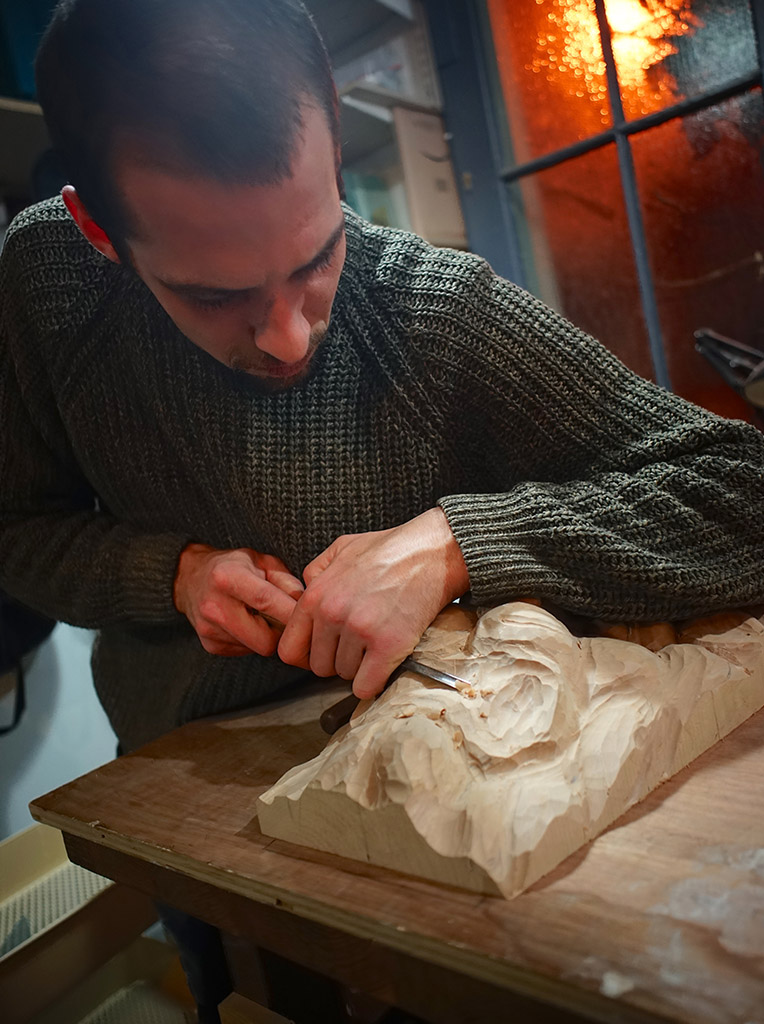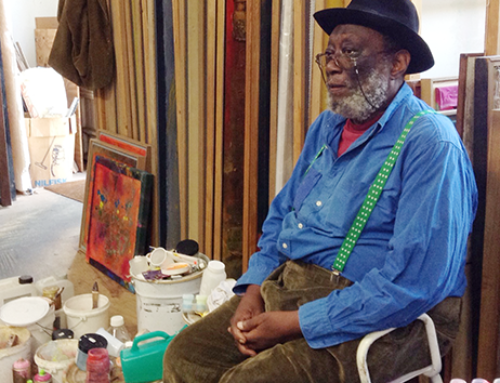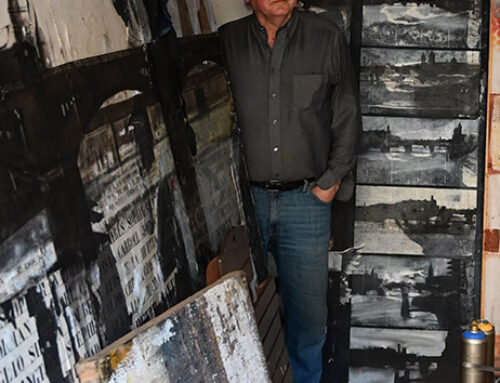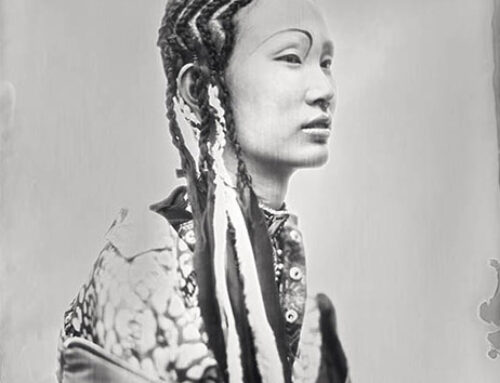For some years, Peacock Yard has hosted young artists who have trained at the local City & Guilds of London Art School. Their studios are arrayed with seasoning planks and beams and blocks, and various kinds of saws, benches and vices, mallets and bundles of chisels; creative havens for the intensive business of working wood.
City & Guilds, which was founded in 1854, is almost unique in teaching such an ancient art. This is the School’s description of the course most of the Peacock Yard carvers follow: “The Woodcarving & Gilding Pathway of our new BA (Hons) Historic Carving course, is a comprehensive, three-year course that will prepare you for a fulfilling career in architectural heritage as a professional woodcarver. Whether your ambition is to create new work in historic contexts or to restore sculpture and ornament, your aesthetic and historical knowledge will be as important as your manual skills.
“On this course, you’ll develop this wide range of skills and will graduate fully equipped to begin a successful career. The curriculum focuses on the wide range of skills required to become a professional wood carver. These include not only advanced carving techniques, but also drawing, modelling, frame restoration, casting, portraiture, artistic anatomy, ornament study, gilding, heraldry, design and the history of carving in architecture and sculpture. You are also introduced to repair and restoration techniques and to relevant conservation practices and ethics.”
Wilfe Gorlin
Enjoyed woodwork at school, and somehow ended up in Canada on a working visa, snowboarding during the day, and working on timber frame houses to earn money to snowboard. He got “really into” working with wood, especially when he started making his own furniture to furnish the little cabin he was living in. After his fill of snowboarding, he returned to Britain, and stumbling across the course, feeling that it offered a more “adventurous endeavour” than joinery. He is now studying on the new Post Grad Diploma course, drawing as much as he is carving.
Cassidie Alder
Studied English, tried an “office job that drove me nuts”, then bookshops. She took a joinery course, and wanted more of the same. She found work with a treehouse company, then onto McCurdy & Co, famous for building the Globe Theatre in the 1990s. Architectural woodwork gave some satisfaction, but Cass wanted more personal control. The first day at City & Guilds “she fell in love” with the craft and aesthetic impact. She has had an eclectic start to her career, wooden memorials, furniture, and decorative work for a newly built green oak frame house.
Joe Murphy
Apprenticed in carpentry and joinery. But he found joinery frustrating, describing the disappointment of having someone “just walk through” a door he had worked on for days. He wanted his work to elicit greater affect. He discovered the City & Guilds course, liking the teachers and the wide variety of skills on offer. Drawing is now of great importance to him. His work errs towards the figurative, current pieces are a newell post of intertwined animals, a dragon, and coats of arms.
Michael Leal
First became interested in wood and making through his grandfather who restored clock cases. Michael went on to study physics at university, but in studying it realised he didn’t want to spend his life immersed in it. He took a joinery course, and so loved working with his hands, he looked for a place to study more deeply. He was attracted to City & Guilds, since it teaches students to understand the principles and history of carving and yet also the practicalities of taking up a commercial career. Michael is particularly drawn to late medieval carving, when the craft reached its apogee of technical and artistic ambition. He has spent time working on restoration of Augustus Pugin’s gothic woodwork at the Houses of Parliament, and on ceilings at Mercers Company in the City of London and Peterhouse Cambridge.





